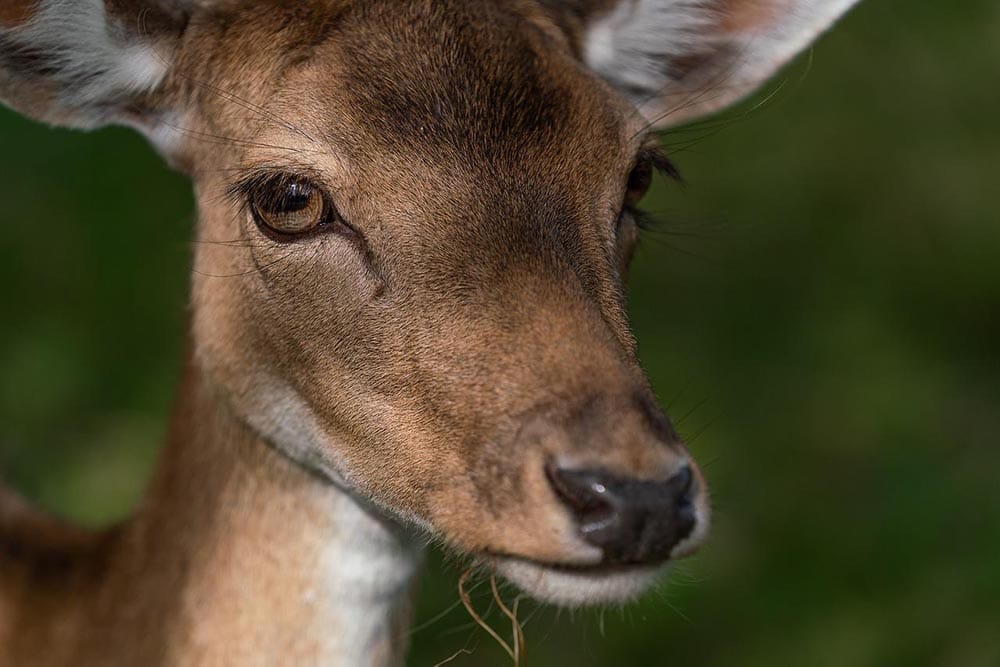Can Deer See Infrared Light? What to Know!
Last Updated on

Infrared cameras, or thermal imaging cameras as they’re sometimes called, are great alternatives to flash photography because they don’t spook the deer. Hunters sometimes use thermal cameras to scout out where deer like to come out at night so they can study their patterns. Infrared light is invisible to the human eye, but the closest to the visible color red. Deer can’t even see red or orange visible wavelengths very well, so your thermal imaging camera is definitely a stealthy choice that the deer won’t detect. The short answer is no, deer cannot see infrared light. Continue reading to learn more.

What Colors Can Deer See?
Deer can see blue and green visible light. They’re mostly red-orange colorblind, which is why it’s okay for hunters to wear orange glow vests (besides it being legally required in some states so that hunters don’t mistake one another for deer and shoot each other).
Unlike humans, deer can see UV light. Interestingly, some laundry detergents contain UV color brighteners, so hunters have struggled for years to find products that won’t cause them to glow in the dark. Deer also have excellent night vision due to a high number of rods in their eyes.
It seems that the worst thing you can do for visibility is to take a night walk in the woods wearing blue jeans that have been washed in detergent containing a UV brightening agent. Conversely, you’ll be almost invisible to deer if you hunt in the daytime wearing red, orange, or camouflage that hasn’t been washed with any brightening detergent.

How to Spot Deer Using Infrared Camera
Infrared light is closely related to visible red light on the spectrum. Deer can’t see either one, so some hunters use infrared cameras to take pictures of deer in the dark. While this is a great idea if stealth is paramount, it might not be the best choice for a nature photographer who’s seeking a stellar quality photo since the picture will be shot in black and white. A full color camera with a flash is a better tool for a wildlife photographer, but it comes with the risk of being spotted and spooking the deer with the flash.

Final Thoughts
If you’re a hunter studying your prey, an infrared camera is the best option for you. However, if the only shot you’re going for comes in pixel form, you might want to bring your full color camera and a lot of patience. Whichever camera you choose, just be sure to wear red or orange, or camouflage that hasn’t been washed with a UV-brightening detergent.
Featured Image Credit: LN_Photoart, Pixabay
About the Author Brooke Bundy
Brooke Bundy is a freelance writer who lives with three cats and a dog. She attended the University of North Georgia where she acquired a B.S. in Media Studies. Booke loves storytelling and spending time with her pets at their house in New Orleans, Louisiana. In her free time, she enjoys gardening, cooking, and brewing coffee.
Related Articles:
How to Clean a Refractor Telescope: Step-by-Step Guide
How to Clean a Telescope Eyepiece: Step-by-Step Guide
How to Clean a Rifle Scope: 8 Expert Tips
Monocular vs Telescope: Differences Explained (With Pictures)
What Is a Monocular Used For? 8 Common Functions
How to Clean a Telescope Mirror: 8 Expert Tips
Brightfield vs Phase Contrast Microscopy: The Differences Explained
SkyCamHD Drone Review: Pros, Cons, FAQ, & Verdict
